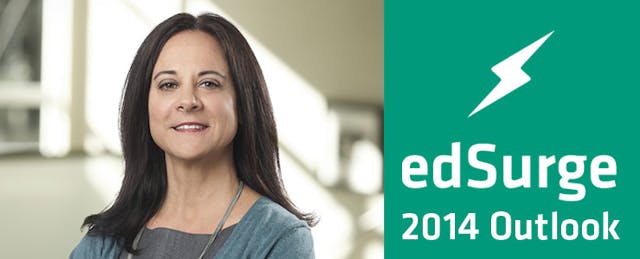At the Bill and Melinda Gates Foundation, we envision a future in which students’ learning experiences will be markedly different than they are today in several ways:
- On any day of the year, students will be able to see how they are doing, where they want to be, and how they might get there. They will feel ownership of their learning and motivated to succeed. They will collaborate and connect with their peers in ways that reflect how they live now and how they will work in the future.
- Schools will be designed to optimize time, pace and instructional methods to make the most of teachers’ time and to create learning paths that work best for each student. Teachers and other adults will have more diverse roles in and out of schools based on their strengths, from coaches and guides to content experts. Teachers and school leaders will have the flexibility, autonomy, and information they need to select content and tools that work best for their students.
- The technology to support such learning will integrate seamlessly into the environment and offer intuitive user experiences and smart recommendations. It will “just work.”
Following the lead of some terrific, innovative educators, we use the term “personalized learning” to describe the shift from traditional classroom approaches to the kinds of learning experiences necessary to realize this vision. I’m expecting to see three things related to this shift in 2014:
1. Personalized learning will go mainstream.
Greater numbers of personalized learning school models will demonstrate their ability to help every student reach their potential, no matter where they start out. As whole-school personalized learning grows and generates results, we’ll see more clearly what’s possible for kids when blended instruction, competency-based progressions, and teacher leadership come together. Students who start the year behind will achieve more than a year of learning growth in a single school year, making up important ground so they can finish high school with the knowledge and skills they need to succeed. As more schools demonstrate what is possible, momentum will grow for fundamental redesigns of instructional models that incorporate the attributes of personalized learning.
2. The “teachers or technology” dichotomy will become increasingly irrelevant.
Nobody knows teaching like teachers. This remains true in the most promising personalized learning school models. When teachers can spend more time with individual students and small groups, and have access to better information and instructional supports, their students learn more. Just as doctors embrace breakthrough technologies for better diagnosis and treatment, teachers are embracing technologies that help them free up time to focus on what matters most for each of their students. This will accelerate in 2014. It’s likely that some voices will continue to sound alarms about schemes to replace educators with computers and algorithms. But the growing number of teachers who incorporate digital content and tools into their instructional practice will provide a strong, fact-based counterpoint to such claims.
3. Product developers will focus more intently on addressing scenarios that matter most to educators and students.
As growth in edtech markets heated up over the last couple of years, really talented engineers and entrepreneurs sometimes built stuff without incorporating lessons from the science of how we learn or addressing concrete use cases that matter for learning. In 2014 we’ll see more targeted market research that taps the voice of teachers, students, and administrators to identify and highlight important use cases along with gaps in the market. This will help mobilize innovators to fill those gaps. We’ll also see more authentic involvement of teachers in the product design and development process, and more focus on what it takes to effectively implement new tools into the workflow of classrooms.
These are just three among many milestones on the way to creating more schools that prepare all kids for success, regardless of what neighborhood they live in. I’m optimistic that momentum toward this goal will continue in 2014!


